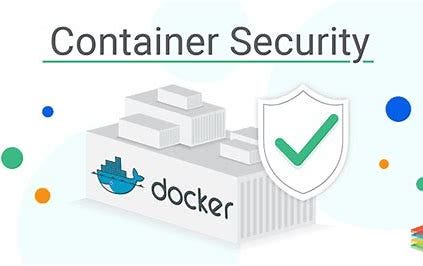
Docker container security refers to the set of practices, tools, and measures specifically focused on securing containers created and managed with Docker, which is one of the most popular containerization platforms. Docker container security involves ensuring the integrity, isolation, and protection of containerized applications and their environments.
Here are key aspects of Docker Container Security:
Secure Base Images: Choose secure and minimal base images from trusted sources to reduce the attack surface. Avoid using images with unnecessary packages and services.
Image Scanning: Utilize image scanning tools to check for known vulnerabilities and malware in Docker images. These tools can be integrated into your container build and deployment pipeline to automatically identify and address security issues.
Dockerfile Best Practices: When creating Dockerfiles, follow best practices such as minimizing layers, running containers as non-root users, and using environment variables securely. These practices help reduce security risks.
Content Trust: Enable Docker Content Trust (DCT) to sign and verify images to ensure that only trusted and signed images are deployed.
Runtime Security: Docker provides runtime security features, such as seccomp, AppArmor, and SELinux, which can be used to restrict the actions and system calls that containers are allowed to perform.
Access Control: Implement user and access controls within Docker. Define who can run and manage containers, as well as access Docker resources. This includes using Role-Based Access Control (RBAC) and configuring authentication mechanisms.
Network Security: Secure container networking with proper firewall rules, network policies, and segmentation to control traffic between containers and external resources.
Docker Security Plugins: Use security plugins and solutions that integrate with Docker to enhance security. These may include runtime monitoring and intrusion detection systems.
Logging and Monitoring: Set up effective logging and monitoring to track container activities and detect suspicious behavior. Tools like the ELK stack (Elasticsearch, Logstash, Kibana) and Prometheus can be used for this purpose.
Secret Management: Securely manage secrets and sensitive data in Docker containers by using secret management tools, like Docker Secrets, or external tools like HashiCorp Vault.
Container Orchestration Security: If using Docker containers in an orchestration platform like Kubernetes or Docker Swarm, ensure that the orchestration layer is also secured. Properly configure access control and network policies at this level.
Compliance and Auditing: Ensure that your Docker container environments comply with security regulations and organizational policies. Regularly audit and document your security practices.
Education and Training: Train your development and operations teams in Docker container security best practices to foster a security-aware culture.
Testing and Validation: Continuously test and validate your Docker container security measures through vulnerability scanning, penetration testing, and code reviews.
Docker container security is essential for protecting applications and data within containerized environments, as well as the infrastructure that hosts these containers. As with all aspects of security, it's an ongoing process that requires vigilance and adaptation to evolving threats and best practices.
Thank you.